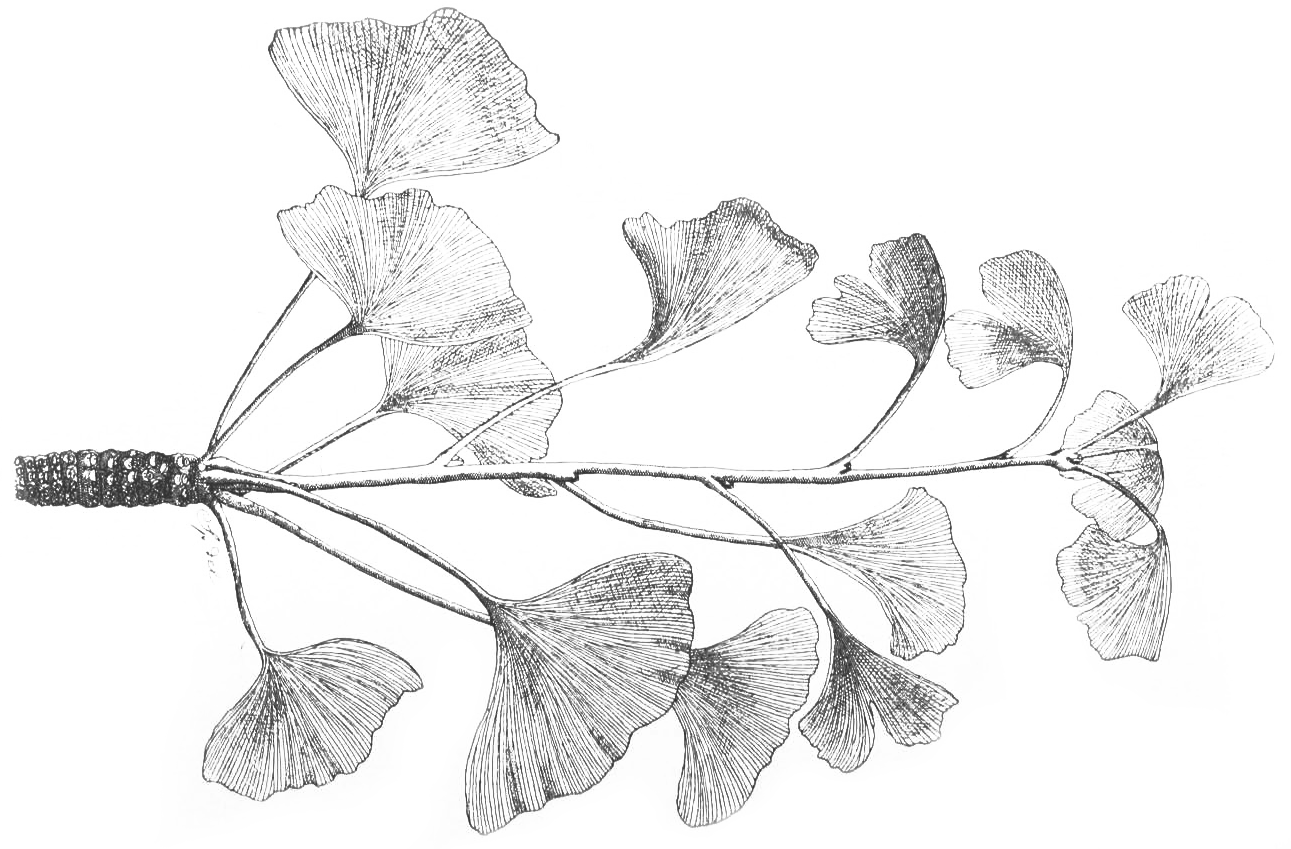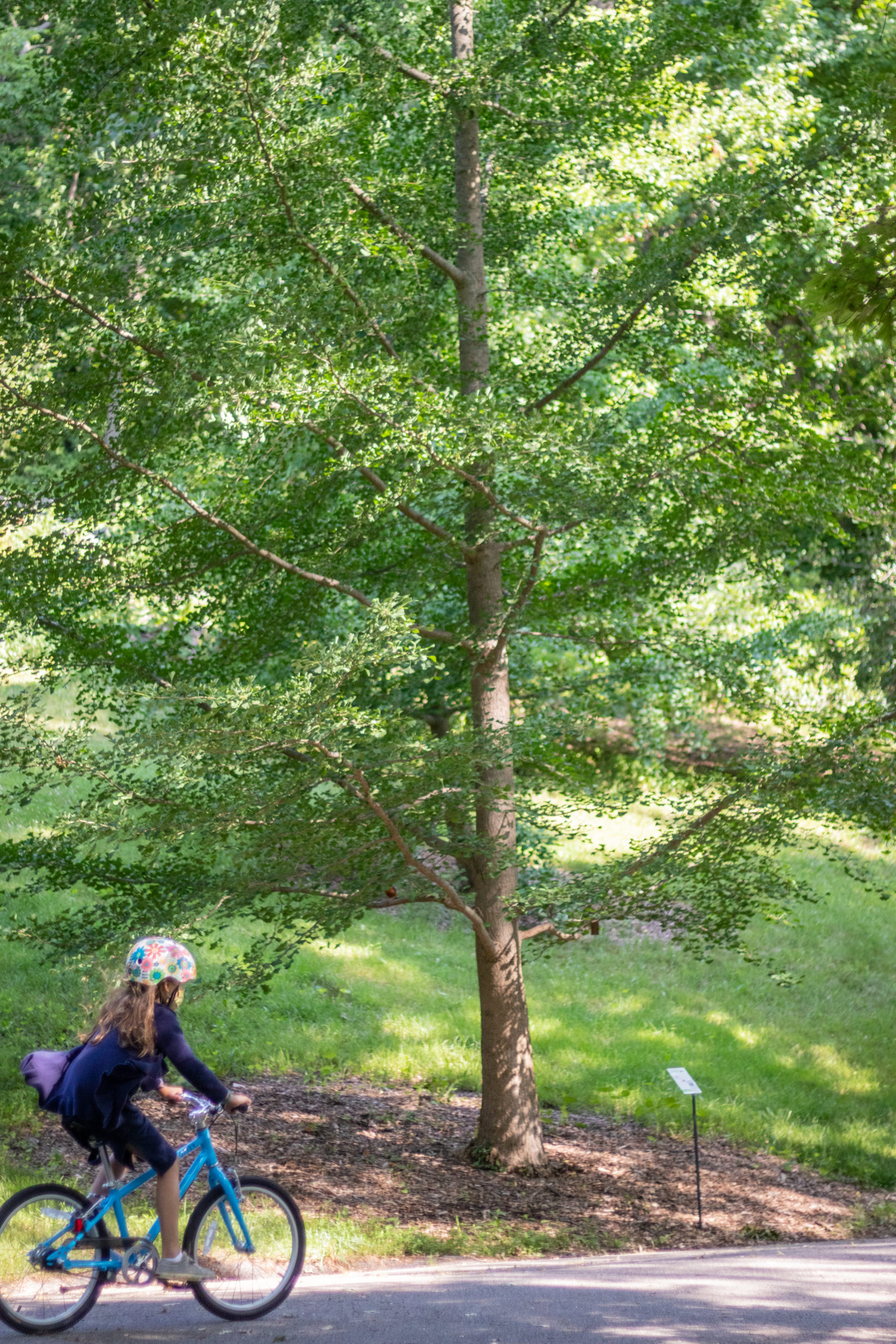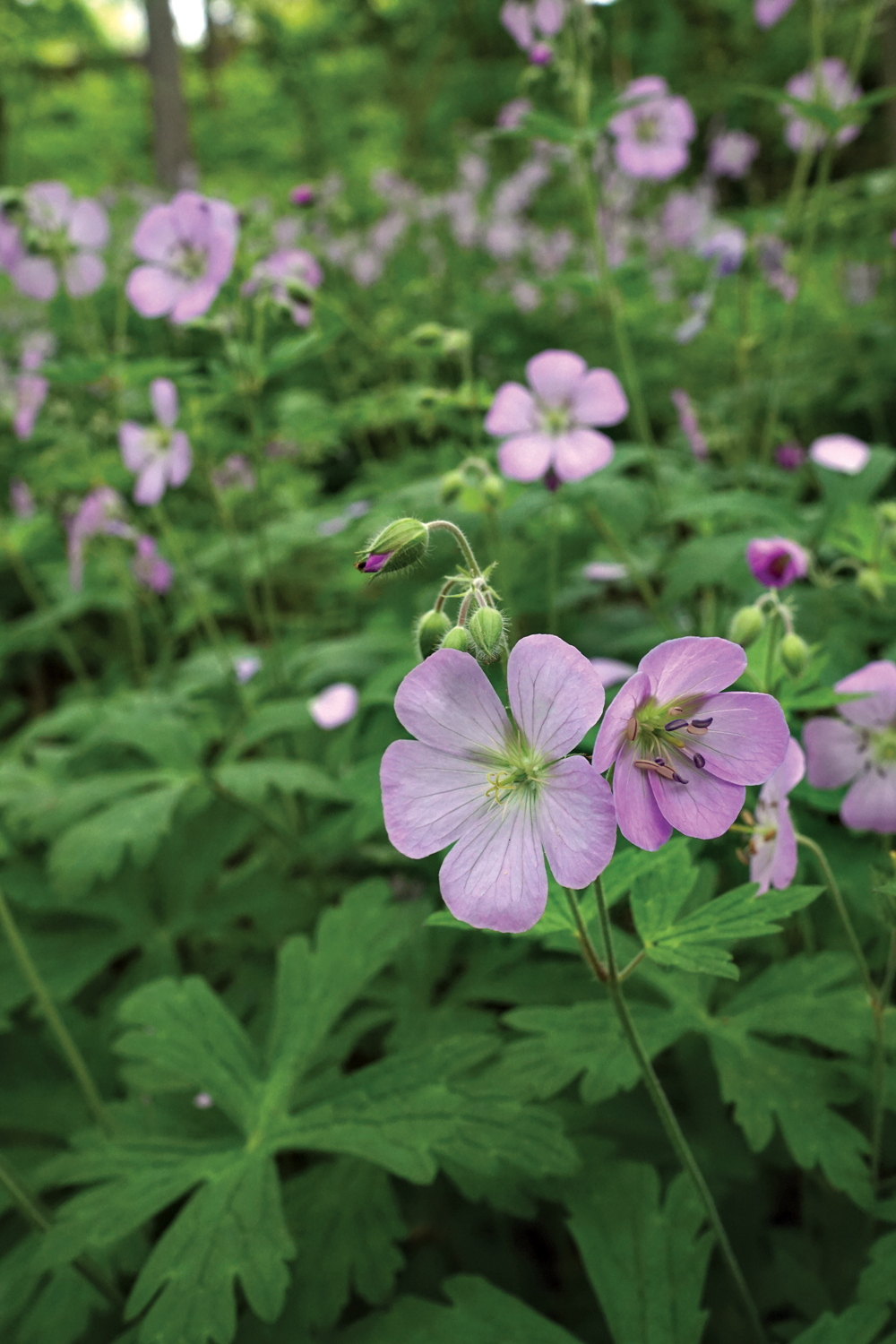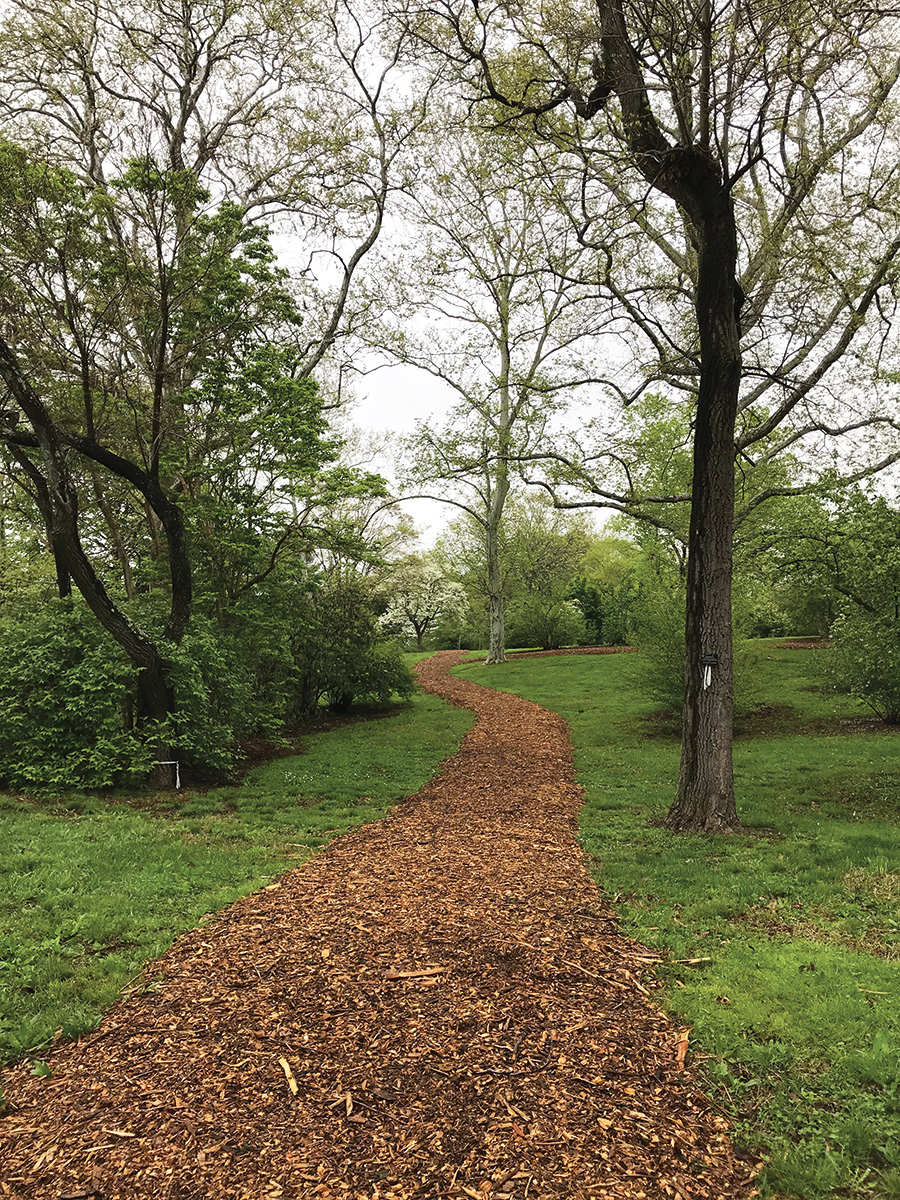Hemlock Hill, the largest Arboretum woodland, occupies 22 acres. It has had a complex history of disturbance, including the 1938 hurricane and arrival of the hemlock woolly adelgid. This woodland is home to a number of unique birds, amphibians, ferns, and herbaceous perennials that prefer the shady understory of dense forestland. Prominent non-native plants include glossy buckthorn (Frangula alnus), castor aralia (Kalopanax septemlobus), mountain ash (Sorbus spp.), and hawthorn (Crataegus spp.). Hemlock Hill collections inform research and feature prominently in ecosystem studies for Boston Public School fifth grade students.
Resources:
Read more about Hemlock Hill in Arnoldia:
- Del Tredici, Peter. 2010. Chinese Hemlock Tsuga chinensis. Arnoldia 68(2): 65-68. [pdf]
- Havil, H.P., M.E. Montgomery. 2008. The Role of Arboreta in Studying the Evolution of Host Resistance to the Hemlock Woolly Adelgid. Arnoldia 65(3): 2-9. [pdf]
- Schulhof , Richard. 2008. Ecosystems in Flux: The lessons of Hemlock Hill. Arnoldia 66(1): 22-28. [pdf]
- Del Tredici, P. 2004. Finding a Replacement for the Eastern Hemlock: Research at the Arnold Arboretum. Arnoldia 63(2): 33-39. [pdf]
- Fordham, Alfred J. 1963. Tsuga Canadensis and its Multitude of Variants. Arnoldia 23: 100-102. [pdf]



















